Dysregulated RNA-Induced Silencing Complex (RISC) Assembly within CNS Corresponds with Abnormal miRNA Expression during Autoimmune Demyelination
- PMID: 25972178
- PMCID: PMC6705439
- DOI: 10.1523/JNEUROSCI.4794-14.2015
Dysregulated RNA-Induced Silencing Complex (RISC) Assembly within CNS Corresponds with Abnormal miRNA Expression during Autoimmune Demyelination
Abstract
MicroRNAs (miRNAs) associate with Argonaute (Ago), GW182, and FXR1 proteins to form RNA-induced silencing complexes (RISCs). RISCs represent a critical checkpoint in the regulation and bioavailability of miRNAs. Recent studies have revealed dysregulation of miRNAs in multiple sclerosis (MS) and its animal model, experimental autoimmune encephalomyelitis (EAE); however, the function of RISCs in EAE and MS is largely unknown. Here, we examined the expression of Ago, GW182, and FXR1 in CNS tissue, oligodendrocytes (OLs), brain-infiltrating T lymphocytes, and CD3(+)splenocytes (SCs) of EAE mic, and found that global RISC protein levels were significantly dysregulated. Specifically, Ago2 and FXR1 levels were decreased in OLs and brain-infiltrating T cells in EAE mice. Accordingly, assembly of Ago2/GW182/FXR1 complexes in EAE brain tissues was disrupted, as confirmed by immunoprecipitation experiments. In parallel with alterations in RISC complex content in OLs, we found downregulation of miRNAs essential for differentiation and survival of OLs and myelin synthesis. In brain-infiltrating T lymphocytes, aberrant RISC formation contributed to miRNA-dependent proinflammatory helper T-cell polarization. In CD3(+) SCs, we found increased expression of both Ago2 and FXR1 in EAE compared with nonimmunized mice. Therefore, our results demonstrate a gradient in expression of miRNA between primary activated T cells in the periphery and polarized CNS-infiltrating T cells. These results suggest that, in polarized autoreactive effector T cells, miRNA synthesis is inhibited in response to dysregulated RISC assembly, allowing these cells to maintain a highly specific proinflammatory program. Therefore, our findings may provide a mechanism that leads to miRNA dysregulation in EAE/MS.
Keywords: Ago proteins; EAE; RISC; miRNA.
Copyright © 2015 the authors 0270-6474/15/357521-17$15.00/0.
Figures
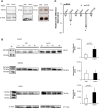
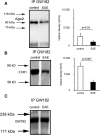
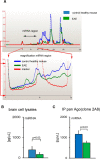

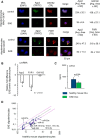

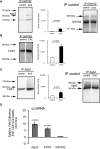
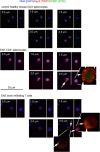

Similar articles
-
MicroRNA-142 regulates inflammation and T cell differentiation in an animal model of multiple sclerosis.J Neuroinflammation. 2017 Mar 16;14(1):55. doi: 10.1186/s12974-017-0832-7. J Neuroinflammation. 2017. PMID: 28302134 Free PMC article.
-
Erythropoietin reduces experimental autoimmune encephalomyelitis severity via neuroprotective mechanisms.J Neuroinflammation. 2017 Oct 13;14(1):202. doi: 10.1186/s12974-017-0976-5. J Neuroinflammation. 2017. PMID: 29029628 Free PMC article.
-
Astrocytes play a key role in EAE pathophysiology by orchestrating in the CNS the inflammatory response of resident and peripheral immune cells and by suppressing remyelination.Glia. 2014 Mar;62(3):452-67. doi: 10.1002/glia.22616. Epub 2013 Dec 19. Glia. 2014. PMID: 24357067
-
Function of GW182 and GW bodies in siRNA and miRNA pathways.Adv Exp Med Biol. 2013;768:71-96. doi: 10.1007/978-1-4614-5107-5_6. Adv Exp Med Biol. 2013. PMID: 23224966 Review.
-
The role of GW182 proteins in miRNA-mediated gene silencing.Adv Exp Med Biol. 2013;768:147-63. doi: 10.1007/978-1-4614-5107-5_9. Adv Exp Med Biol. 2013. PMID: 23224969 Review.
Cited by
-
Effect of young exosomes injected in aged mice.Int J Nanomedicine. 2018 Sep 11;13:5335-5345. doi: 10.2147/IJN.S170680. eCollection 2018. Int J Nanomedicine. 2018. PMID: 30254438 Free PMC article.
-
Neuronal microRNA regulation in Experimental Autoimmune Encephalomyelitis.Sci Rep. 2018 Sep 7;8(1):13437. doi: 10.1038/s41598-018-31542-y. Sci Rep. 2018. PMID: 30194392 Free PMC article.
-
miR-155-3p: processing by-product or rising star in immunity and cancer?Open Biol. 2022 May;12(5):220070. doi: 10.1098/rsob.220070. Epub 2022 May 25. Open Biol. 2022. PMID: 35611569 Free PMC article. Review.
-
miR-155-3p Drives the Development of Autoimmune Demyelination by Regulation of Heat Shock Protein 40.J Neurosci. 2015 Dec 16;35(50):16504-15. doi: 10.1523/JNEUROSCI.2830-15.2015. J Neurosci. 2015. PMID: 26674874 Free PMC article.
-
The Heat Shock Protein HSP70 Promotes Th17 Genes' Expression via Specific Regulation of microRNA.Int J Mol Sci. 2020 Apr 17;21(8):2823. doi: 10.3390/ijms21082823. Int J Mol Sci. 2020. PMID: 32316658 Free PMC article.
References
-
- Breving K, Esquela-Kerscher A. The complexities of microRNA regulation: mirandering around the rules. Int J Biochem Cell Biol. 2010;42:1316–1329. - PubMed
-
- Bronevetsky Y, Villarino AV, Eisley CJ, Barbeau R, Barczak AJ, Heinz GA, Kremmer E, Heissmeyer V, McManus MT, Erle DJ, Rao A, Ansel KM. T cell activation induces proteasomal degradation of Argonaute and rapid remodeling of the microRNA repertoire. J Exp Med. 2013;210:417–432. doi: 10.1084/jem.20111717. - DOI - PMC - PubMed
Publication types
MeSH terms
Substances
LinkOut - more resources
Full Text Sources
